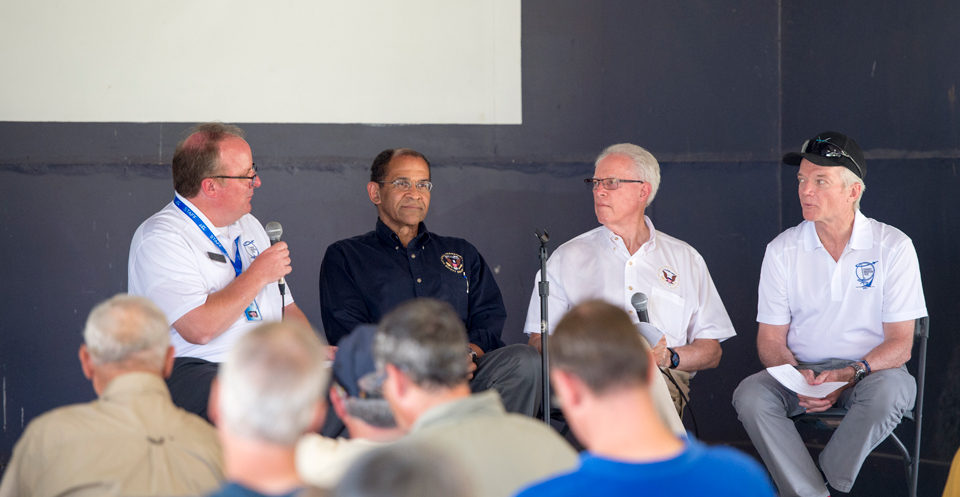NTSB Shares EAA Safety Goals
By James Wynbrandt
July 26, 2016 - With accident rates holding steady, general aviation has reached a safety “plateau” whose path to improvement lies in collaborative efforts to enhance the collection, analysis, dissemination and utilization of data, NTSB Chairman Christopher Hart told attendees at the Meet the Chairman forum Tuesday at EAA AirVenture Oshkosh 2016.
“I would submit, general aviation has the opportunity to figure how to get off the plateau by working together,” said Hart. Added fellow panelist and NTSB Board Member Dr. Earl Weener, “Focus on where the problem is. It’s [found] in the data. A little bit of data will destroy a whole bunch of opinions.”
Joining the pair on the dais were Sean Elliott, EAA Vice President, Advocacy and Safety; and former astronaut and homebuilder Charlie Precourt, EAA Vice Chairman and chair of the EAA Safety Committee.
The NTSB’s “Most Wanted List” of safety goals for 2016 includes reducing Loss of Control (LOC) accidents in general aviation, and the expanded use of installed recording devices. Hart noted the EAA’s Founders Innovation Award for LOC solutions was inspired at the Meet the Chairman forum at last year’s fly-in. (The award was presented Tuesday night; see full coverage in Thursdays AirVenture Today). Meanwhile, the enhanced digital data capturing capabilities of GA avionics, and the ubiquity of smart devices are improving data collection for accident analysis, “helping us conduct more effective and efficient investigations,” Hart said. For example, he cited an iPhone video of a takeoff of a recent de Havilland Otter crash in Alaska that helped the NTSB establish aft CG loading as the accident’s probable cause.
Elliott noted that the EAA and the NTSB have “long enjoyed a great partnership” in their common safety goals, and underscored the experimental aircraft community’s role as “an incubator” of technologies that improve safety.
The NTSB favors bringing safety enhancing technology from the experimental aircraft world into production aircraft, and supported the easing of rules for retrofits of Angle of Attack indicators and electric Attitude Indicators in production aircraft. “If an aircraft is certificated under Part 23, and they want to enhance safety, and [installations] are not interfering with operation of the airplane, then there ought to be a simple way [of allowing that], as long as the equipment is manufactured to some [approved] standard,” Weener said.
Saying “opportunities are stronger than ever,” Elliott pointed to autopilots, and fuel management and engine monitoring instruments as other installations that can reduce risk. Such equipment, noted Precourt “can revitalize aircraft and enhance safety and enjoyment and utility at a very low cost.”
The General Aviation Joint Steering Committee (JSC), whose members include the NTSB, EAA and other aviation organizations and manufacturers, is involved in an ongoing collaborative effort to improve safety. Weener said when industry partners sit down together, “the competitiveness goes away and the desire to come up with implementable, practical, effective solutions drives everyone.”
The EAA will assume the co-chairman role of the JSC later this year, “working with others to take it to the next level,” said Elliott.
Here at the fly-in, the NTSB display is in the Federal Pavilion, and has experts and information on hand.

